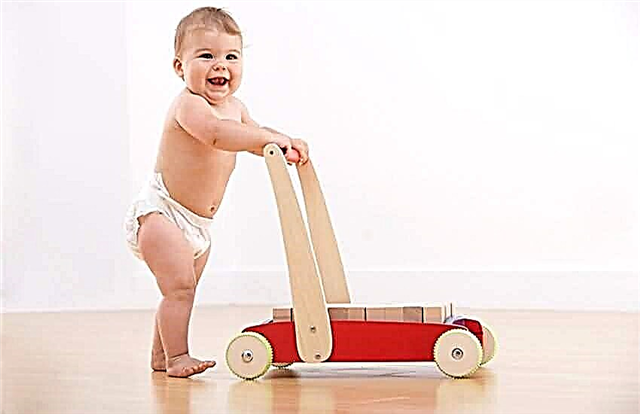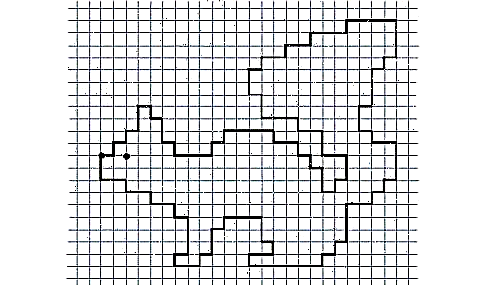
Remembering the years spent in school, each of us had completely different classmates. Some could learn a huge poem in just a matter of minutes, while others could hardly keep an easy quatrain in their heads. But for the most part we all grew up in approximately the same conditions. What can not be said about our children. Some are busy with private lessons from morning till night, others sit at the computer for days. Both the first and the second are not bad for the development of memory, but in everything you need to know when to stop.

Criteria for the success of classes
Of course, memory is one of the fundamental factors influencing a person's life from childhood to very old age. Someone has it well developed, someone suffers from the fact that he always forgets everything. In any case, memory, like any other skill, needs to be developed, trained and improved. But before you start practicing, you need to understand what level your child is at. To do this, answer a few questions.
- Can a child find a common language with peers?
- How well does it adapt to a given environment?
- How quickly does he respond and answer questions from adults?
- How attentive is your baby?
- Does he have difficulties when he needs to learn, remember and retell some text?
- Does he like doing his homework?
- Does he like reading?


If, while looking for answers to these questions, you find your child has even slight memory problems, immediately start special classes. Lack of memorization skills will hinder him not only at school or when communicating with peers, but also in adulthood.
It is difficult to imagine a successful person who is incapable of memorization. It is memory that makes us more attractive in terms of communication. The knowledge that our brain stores helps us both in professional activities and in solving everyday problems. However, even if it seems to you that your child perfectly remembers any information in no time, do not ignore this article anyway. After all, this ability requires attention, understanding and care about it. Therefore, from childhood, it is important to follow a few simple rules that should become a habit for the whole family.

Instilling interest in reading
This will help not only develop memory, but also broaden horizons, and will also improve the child's attention. Don't force to read a lot at once. For a start, 5-10 pages a day will be enough. Pick up the book yourself more often. Be an example for your child.
Read more aloud. Have family evenings reading and discussing your favorite books. Choose those that are understandable and interesting to children. Otherwise, you can achieve completely opposite results and completely discourage the love of reading. Make sure that your child does not get bored during these activities.


Memorizing poems and songs
They are easier to remember than prose. At first, take small quatrains by children's authors. It is easier for a child to understand them. And as you know, our brain is much better at memorizing the information that it understands, and not the information that it receives with the help of "bison". If the baby does not learn something, explain to him what this or that word means. Verses don't work, switch to songs. The rhythm of the music should help you better learn words. The main thing is to get the child interested in this activity. If he will not be active, look for other options.


Studying the techniques of mnemonics
Mnemonics is based on the creation of associations. Remember the ABC book? A house near the letter "D", a frog near "L", a watermelon near "A". This is one of the simplest associative series that can be used when studying the school curriculum. The well-known rat can be attributed to the same method, which the bisector looks like, running around the corners and dividing them in half. Or Pythagorean pants, which are equal in all directions. Try to come up with something similar to each rule that is not easy for a child - and soon he will snap them like nuts.

Cross-linking
For better memorization of the material, use different methods of its perception. For example, a child cannot memorize a poem in any way, although he has already read it dozens of times. Try to put him on an audio recording of this piece. If you do not find the version voiced by the actor on the Internet, record your voice or the voice of the child himself.
Offer to draw on each line what the baby associates with the line. Remember with him what smells you can feel, what sounds you can hear if you encounter what is described in the poem in real life. Use as many senses as possible so that the information flows gently into the baby's head.

Making sense of information
Keep serrated lessons to a minimum. If possible, explain to the child every, even the most difficult process. If you don't know how to demonstrate the law of physics or chemistry, find a video or science film that suits you.
Teach your child to understand the essence of the issue, and not just learn incomprehensible words. So he will not only begin to memorize the necessary information faster, but will also become better at understanding the issue as a whole, and soon he will himself begin to look for ways to obtain additional explanations for better assimilation of the material.
By the way, it is better not to ignore the examples that many of us "omit" when studying a particular topic, since they help to understand well what needs to be learned.

Repetition of what has been read and learned
Repetition makes it easier to assimilate any information received. The most common and effective scheme is as follows:
- learned;
- repeated after 20 minutes;
- a day later - another repeat;
- the next repetition - after 2 weeks;
- the final fixing repeat - after 2 months.

There are, of course, faster circuits for execution. They fit e.g. when you need to prepare for the exam in a short time. Then use the following repetition sequence:
- learned;
- two repetitions - on the same day;
- next repetition on the third day - if you started on Monday, then this must be done on Wednesday;
- the fourth - after another 3 days, that is, if you follow our schedule, then on Sunday.

Another popular scheme looks like this:
- repetition # 1 40 minutes after receiving information;
- then 2-3 more times a day;
- the next day, do it again, or better twice;
- then - once a week or even 10 days.
So you can not only easily consolidate the knowledge gained, but also supplement it with new ones, as if stringing various additional elements on a thick thread.

Best practices according to psychologists
To develop a child's memory, you need to interest him in this process. A younger student will be able to do this better with the help of a game. And also in the process of training, it is recommended to use more schemes, graphs, various drawings. However, do not overwhelm school-age children. You need to understand when they get tired and give them the opportunity to rest. Otherwise, you simply won't be able to improve brain function. The head of both an adult and a man of school age will simply cease to perceive any information.

You can develop memory using many different techniques. The simplest ones are known to each of us from childhood. For example, working on errors is good for long-term memory. Remember how you did it at school? So, this process is far from a waste of time. So you can train attention, restore lost knowledge or increase their level. There are also less common, but no less effective methods.

Cicero's method
This method is named after the famous Roman orator Mark Tullius Cicero. He made his long speeches without a single prompt. According to some reports, he was able to memorize a large amount of information, including dates and other numbers, precisely thanks to this method.
Its essence is as follows: it is necessary to arrange the "units" we need in a well-known environment. For example, in an apartment. At first, you can actually walk around the room and think about how and where this or that information will be placed. Then this can be done exclusively in imagination. Experts say that it is quite realistic to master this technique in just 2-3 lessons. And after that, it can be used an infinite number of times, and using the same space, if necessary, changing the situation in it.

As soon as a person needs to remember something, he simply mentally walks around the room with prompts and gives information unmistakably, clearly and quickly.

Shichida Technique
Named after its founder, professor from Japan Makoto Shichida. He argued that the possibilities of any person are endless. And all problems with memory or attentiveness are nothing more than the omissions of parents who did not develop the innate abilities of their child from early childhood. By the way, in our country there are still no centers working according to the Shichida method, although there are hundreds of them in the world. But for now, you yourself can use the Eastern wisdom. Moreover, this does not require large investments. Here are some of the exercises to do with your child.


Exercise number 1
Take some cards with pictures of various objects or animals. Show them to your child for literally 5 seconds. Next, you should remove one of the pictures, and reopen the pictures for the baby. His task is to find the loss. To begin with, you can use the minimum number of cards, over time it needs to be increased.

Exercise number 2
Take 2 of the same sticker sets. From one create an image yourself, give the other to your child. Its task is to replicate your creation. The same rule applies here. First, we use a minimum of details. Each time we increase their number.

Exercise number 3
According to Shichida, jigsaw puzzles also have a beneficial effect on memory development. Moreover, for young children it is not at all necessary to buy them. Draw any object yourself. For example, a boat. Cut the sheet into several pieces. The kid's task is to recreate the picture. Over time, also increase the number of items to collect.
Exercise number 4
You will not need any handouts to complete it. This lesson is aimed at recreating images, real events. Try asking your child what he remembers about a recent trip to the circus, yesterday's walk, meeting his grandmother, and so on. Try to make the kid remember everything in the smallest detail - what the people were wearing, what they said, what they smelled like. Make it harder each time. Refer to older events.

Doman memorization method
The author of the method is the American specialist Glenn Doman, who in the middle of the last century worked on the problem of restoring children with various disorders of the brain. His recipe is cards depicting various objects, animals, people with corresponding signatures.


Pictures are distributed according to various themes - flowers, birds, interior items and so on. According to Doman's theory, if you show such images to children regularly, they will certainly remember them.
However, opponents of this doctrine argue that it is better to show the animals in the zoo once than 5 times in the picture. But there are those who have found a middle ground. They combined both principles. In the morning they look at the kangaroo in the picture, and in the afternoon they go to visit him in the menagerie, thus consolidating the knowledge gained with the help of Doman's cards. By the way, for older children, there are kits for better mastering the basics of reading and counting.

The eidetic principle
The name comes from the Greek word "eidos", which translates as "image". The methodology is based on the theory that it is easier for a person to remember not dry numbers and facts, but what they associate with them. So, for the study of mathematics, for example, it is proposed to designate each symbol with some object or creature. Two is a swan, four is a chair, seven is an ax, and so on. And, ideally, the child needs to come up with what he associates with this or that word. So he will master it even faster.

Simple exercises
Lighter exercises can be done. All the same pictures are aimed at visual memory. Take any images. Show them to your baby. Hide one. The child's task is to remember which card is missing.

To train your auditory memory, listen to music more often, turn on children's songs in the car and at home, they are better remembered. Another way is to play with animals. Turn on the sound of a bird or animal for your child. He needs to guess who is "talking" to him. Poems for training memory, as mentioned above, are also suitable. Just do not forget that you should not immediately start Pushkin's poem. Start with small rhymes 2-4 lines.

And also for the development of mindfulness there is such a game. Blindfold the child. His task is to walk around the room, apartment, hitting as few objects as possible. Increase the distance over time. But remember safety.

Improvement of brain function is promoted by retellings of a kid recently heard a fairy tale, for example. You have read a book to your child, ask what he particularly remembers. Ask to create a short oral presentation of what you read before bedtime, retell the text. By the way, about a dream.
Scientists have proven that the information that comes to us before we plunge into the arms of Morpheus learns much more efficiently than if we tried to put it on the shelves of our skull in the middle of the day.

One more tip - divide information by topic. Take up the animal world today, fauna tomorrow, devote the day after tomorrow to the study of flowers, the next day to professions. Do not try to load everything into the baby's head at once. This also applies to those who are still being brought up in the preparatory group of a kindergarten, and those who are already in elementary school.

And one more important point. A child's memory is short-term. It stores information for a much shorter period than that of an adult. therefore do not forget to repeat what has already been taught. In any case, your task is to interest the kid in gaining knowledge. Doesn't he like the multiplication table? Go backwards. Try to learn the division table first. The child should enjoy any activity. Otherwise, it will close both from you and from any flow of information. And he will do it unconsciously.

Expert recommendations
Thinking is a complex and energy-consuming process. Therefore, before starting to develop any skills of the child, provide him with full conditions for this.
He must enough sleep to have time to restore the brain. It is necessary to be in the fresh air more often. By the way, this will not hurt you either. Oxygen will help speed up thought processes.

The next item is exercise stress. Ideally, you should send your child to some kind of sports section, even if you are sure that you are raising a future Nobel laureate. Any activity is beneficial not only for the muscles of the body, but also for the muscles of the mind. Therefore, at least make sure that your miracle is doing exercises.

And, of course, control nutrition. Include foods such as broccoli, spinach, carrots, and fatty fish in your young genius's diet. It is clear that not every kid would be happy to agree to such a menu. Therefore, show your culinary imagination when preparing dishes. By the way, bananas and walnuts may well help with this.

And after you have provided all the necessary conditions, start any workouts for the mind. - if you want, play with words, if you want - with numbers. Children's chess, mnemonics - anything will do.

You will learn 7 ways to improve your child's memory by watching the following video.



